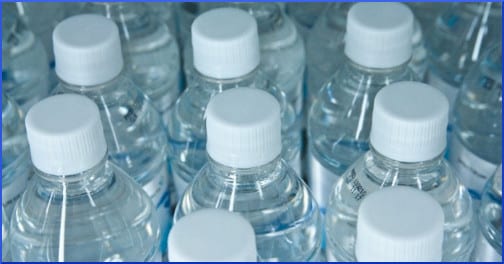
Yesterday, Childhood Obesity News talked about the importance of water, especially in summer. But soon summer will be over, and children will return to school. A few months ago, a Syracuse University study “found making water available through self-serve dispensers in school cafeterias results in student weight loss.”
In New York City, thanks to a grant from the Centers for Disease Control and Prevention, many elementary and middle schools have added “water jets” (which are basically electrically-powered dispensers) to their cafeteria furnishings. James T. Mulder writes:
Researchers compared body mass index and overweight status for all students before and after the introduction of the water jets…
Students at schools with water jets for at least three months saw a reduction in BMI of .025 for boys and .022 for girls compared to students in schools without water jets. The water jets also were associated with a .9 percentage point reduction in the likelihood of being overweight for boys and a .6 percentage point reduction for girls.
In other words, there were slight but observable and encouraging BMI changes, affecting boys slightly more than girls. It goes without saying that drinking a lot of water is advisable on general principles, and in the school setting, the researchers find that kids will often choose water instead of beverages with caloric content.
The Institute of Medicine of the National Academies recommends five cups of water per day for the 4-8 years age group. For 9 to 13-year-olds, the recommended number of cups for girls is seven, and for boys eight. Between ages 14 and 18, boys need even more water, with the recommendation rising to 11 cups, compared to eight for girls.
Environmental factors come into play of course, like the ambient temperature and humidity. The site notes:
Before, during and after any physical activity, kids need to drink plenty of water, especially in hot weather. The goal is to drink a half cup to two cups of water every 15 to 20 minutes while exercising.
Adults interested in weight loss are advised, according to WebMD.com, to drink a pint of water 30 minutes before each meal.
Measuring your internal water
In an article about hydration and obesity, Medscape.com notes:
Urine osmolality is regarded as an excellent measure of hydration and is a better indicator than just water intake because it accounts for water and solutes acquired in food and other drinks.
Your responses and feedback are welcome!
Source: “Simple solution to childhood obesity: More water at lunch, study says,” Syracuse.com, 01/19/16
Source: “Water: How Much Do Kids Need?,” Eatright.org, 05/03/16
Source: “Drink Water Before Meals to Lose Weight?,” WebMD.com. 08/28/15
Source: “Poor Hydration May Contribute to Obesity, Study Suggests,” Medscape.com, 07/12/16
Photo credit: Steven Depolo via VisualHunt/CC BY

 FAQs and Media Requests:
FAQs and Media Requests: 











